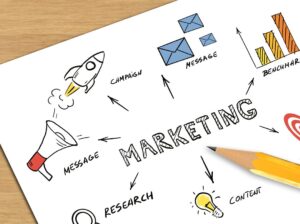As a business owner, you have more important things than your technology to think about at this time of year, however you shouldn’t forget the important role that technology can play in helping you achieve your 2023 business goals.
In fact, the right technology can have a crucial role in supporting the growth, efficiency and profitability of your business – no matter what industry you are in.
Some of the key benefits you should get from your technology include:
- Improved customer experience and retention
- Better collaboration and communication with staff
- Staff and time efficiency through automating business processes
- Protection of sensitive customer information
- Larger operational cost savings
Yet with the speed of technology advances, changing your technology can be both costly and risky. So, how do you know you’re choosing the right solutions for your business?
The key is to make sure any new technology you deploy is aligned to the strategic goals of your business and that it will achieve the outcomes you are looking for. Some of the questions you should ask yourself are:
- Are our customers happy with the technology experience we provide?
- Is our website and social media platforms accessible from any device?
- Who is using our existing IT systems, and what do they use them for?
- Do our staff work together as much as we would like?
- Are we duplicating effort between different teams?
- How efficient are our current operations?
- Are there ways of working faster or tasks that we could automate?
- Is our customer information secured and safe?
- Can we access our customer information when we need to?
- Are your business needs or processes likely to change in the near future?
By answering these questions, you should be able to build a clear picture of the business benefits you can achieve or the business goals you might be able to support by introducing new technology – but what technology exactly?

This is where you need a written IT Strategy outlining the decisions needed to set up your technology for the future.
A good strategy will start with your business strategies, map these to the business and IT needs that are necessary to support the strategies and look at the technology capabilities that are required to deliver those needs. When looking at capabilities, you should identify what equipment, software, people and processes are needed – not just hardware and software.
A good strategy will also provide design principles that take into account not only functions and compatibility, but also ease of use and the potential for later expansion. Once you have these in place, you can formulate the ideal target or future IT state you desire and then plan how you will execute the projects necessary to reach the target state.
When developing the “roadmap”, you need to consider all aspects, including:
- Hardware
- Software
- Networks and Infrastructure
- Technical Support
- Vendor Management
- Inventory Control
- Record-keeping
- Database Management
- Collaboration and Communication
- Cloud and web-based activities
- Industry-specific technology
As your business changes and grows, it is important that your technology is able to adapt and therefore your IT Strategy should be considered a fluid document – one that will evolve with your business and with other technology advances.






